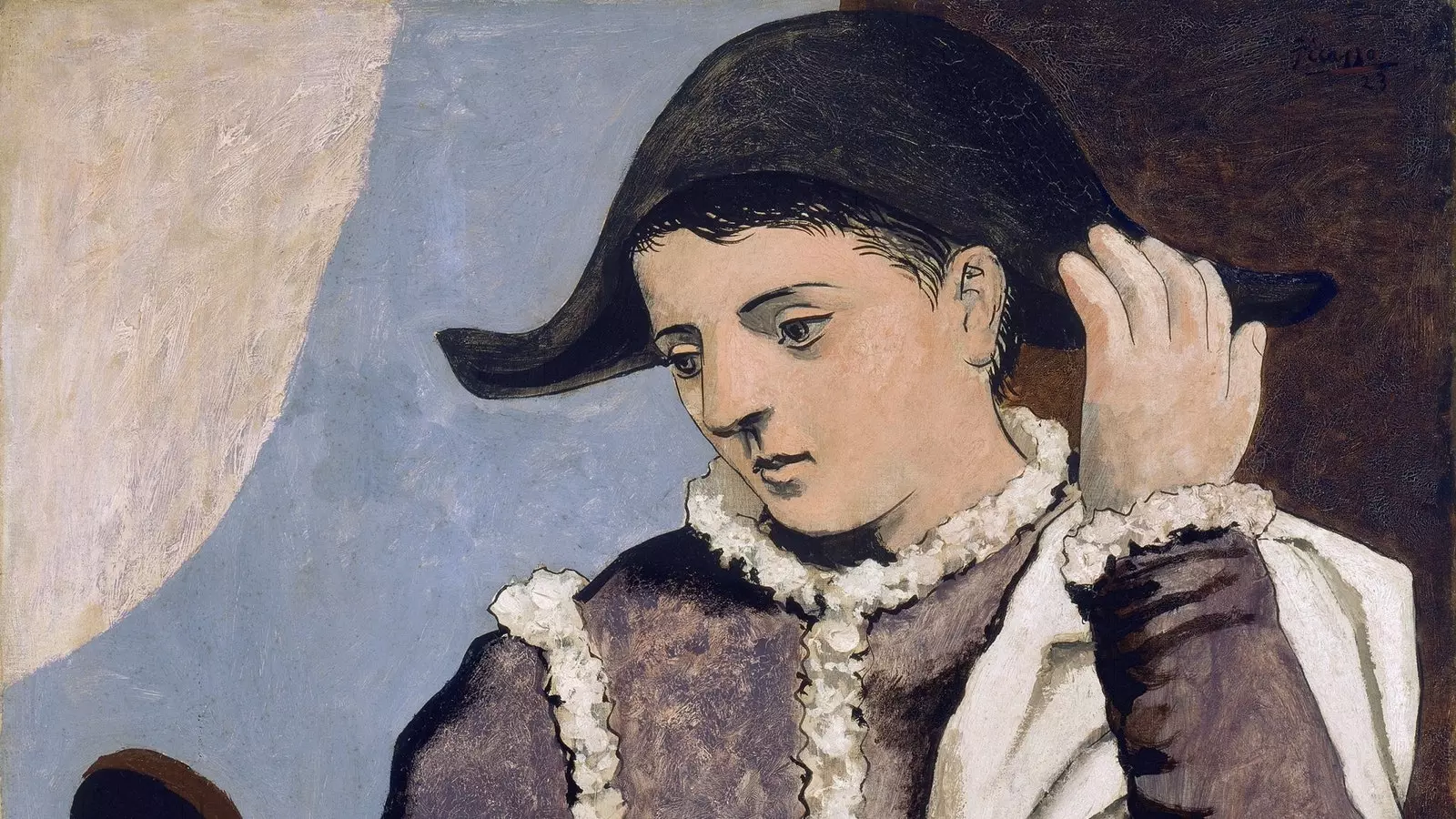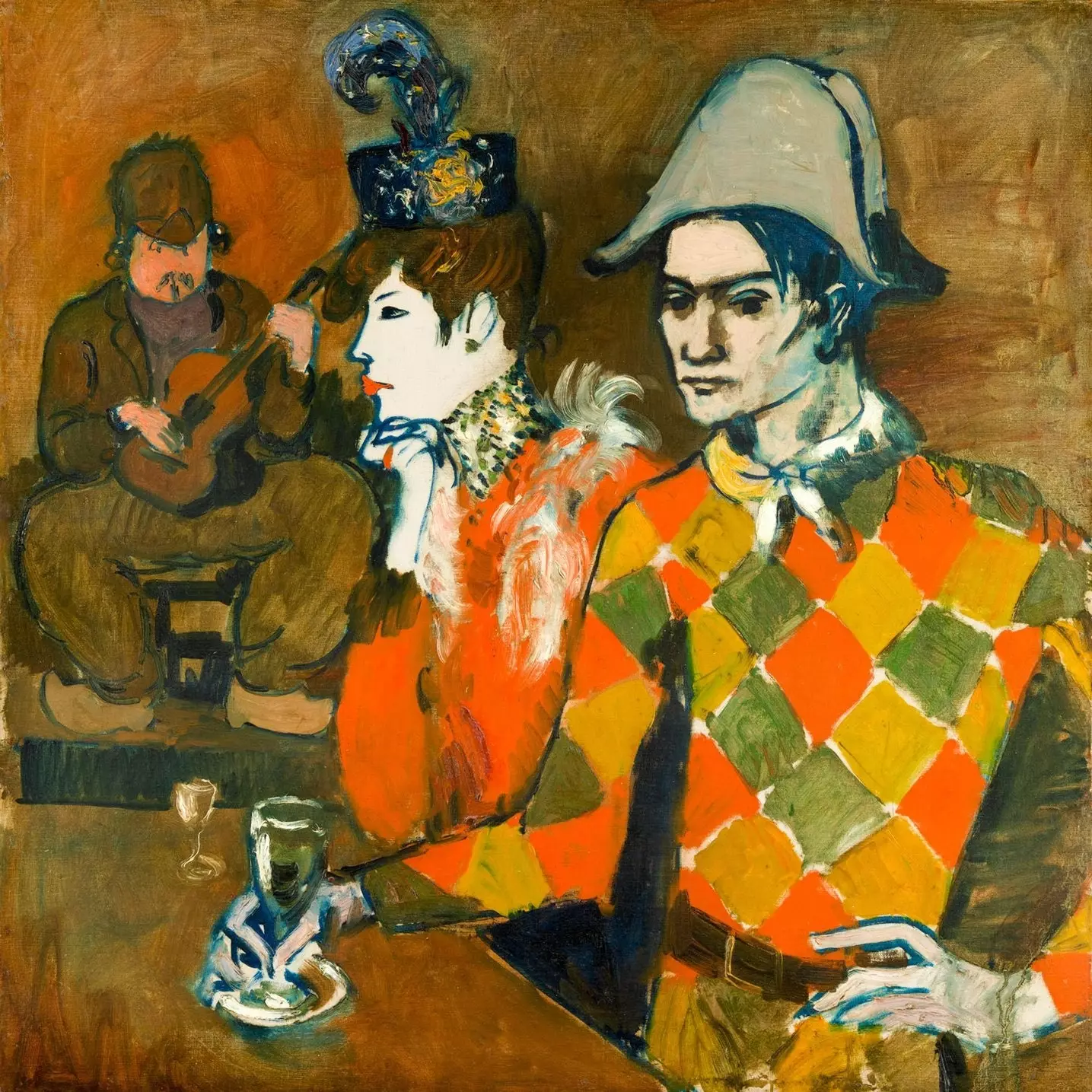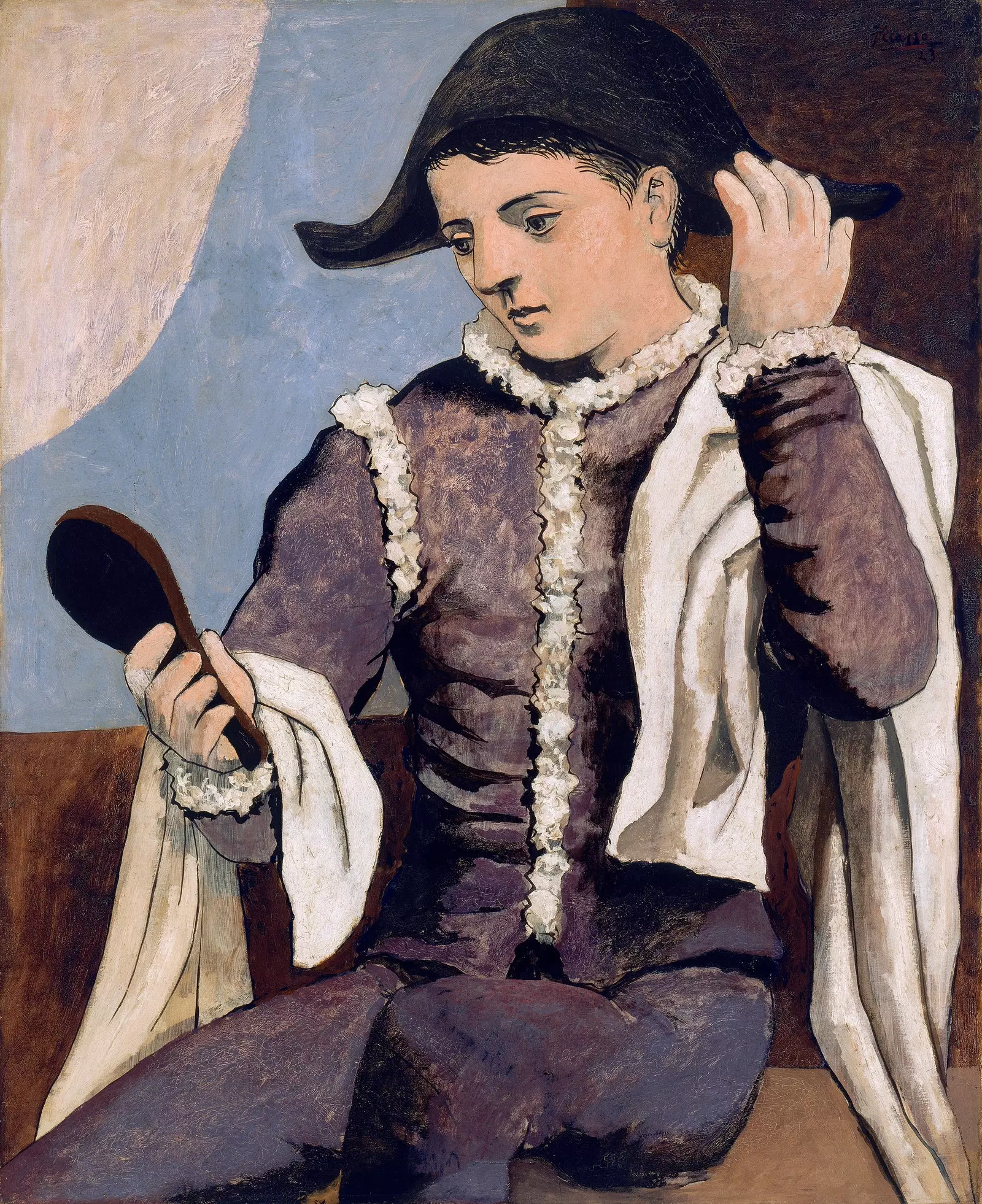
Trip to a painting: 'Harlequin with a mirror', by Pablo Picasso
Harlequin and Pierrot belong to the Commedia dell'Arte , a theatrical genre who was born in Italy in the 16th century. Traveling companies stopped in the cities and represented amorous intrigues. Harlequin was cunning, foolish, quarrelsome, acrobat and jumper . A chameleon being that competed with Pierrot For the love of Columbian . This one was candid, trusting, sensitive, an object of ridicule. Neither of them made it. A handsome young man won. Humiliation, poverty and hunger equaled them.
In the 19th century, the circus turned Pierrot and Harlequin in the clown and the mountebank. The artist, the center of his own work, appropriated them to reflect his nonconformist spirit.
Picasso incorporated Harlequin into his imaginary in the blue period , guided by the poet Apollinaire . His face, painted white, resembles Pierrot. His identity is confused. on the construction site 'Au Lapin Agile' he is depicted in a rhombus suit and a two-cornered hat in the Montmartre tavern, in 1905 . He holds a glass of absinthe. Offstage, the acrobat's suit becomes a disguise, it excludes him from an alien reality.

'Au Lapin Agile'
A trip to Italy brought Picasso back to the world of theater. Diaghilev , director of the Ballets Russes, had persuaded him to design the scenery and costumes for For the , of satie . He came along with Cocteau and Stravinsky to two representations of the company in Naples. There they walked through the spanish neighborhood , bought postcards, watched puppet shows and drank. Their festive spirit culminated when they were arrested for draining water in the Galleria Vittorio Emmanuele.
The trip transformed his view of him. He left cubism behind. Returning to Paris, he left Montmartre and settled next to Olga Khoklova , dancer of the Ballets Russes, in the central Rue La Boetie . The sculptures that he had contemplated in the National Museum of Naples led him to a lyrical and sleepy classicism . In 'Harlequin in front of the mirror' , painted in 1923, the monumentality of the figure fills the canvas.
The character is the same that appeared in the blue period, but the sense of it has changed . Picasso had become a famous painter. His friendship with Cocteau moved him to a mundane setting. Étienne de Beaumont, the Viscounts de Noailles and Winnie de Polignac They were the patrons of a court that was nourished by frivolity, dance, cinema and poetry.
The Golden Age , the movie of Luis Bunuel , premiered in a hall of the mansion of Charles de Noailles. At a party for the Earl of Beaumont, Luisa Casati dressed as San Sebastian . Her suit, laden with arrows, lit up as she entered, causing a shrill short circuit. The Murphys, American millionaires, celebrated the premiere of Les Noces Stravinsky in a boat that traveled the Seine until dawn. Mountains of toys were stacked on each table . Picasso placed a cow on top of a fire engine.
Returning home, he was able to recall Apollinaire's lines: "Rose-crowned Pierrots pass by, pale ghosts that haunt the night." He was soon walking away. Je ne suis pas a gentleman . I am not a gentleman, said the sign he hung on the door of his study. Without a doubt, if we managed to distinguish the image in the mirror of Harlequin, we would find the face of the artist. Comedian, actor and mask.
'Harlequin with a mirror' is exhibited in room 45 of the Thyssen-Bornemisza Museum.

Trip to a painting: 'Harlequin with a mirror', by Pablo Picasso
